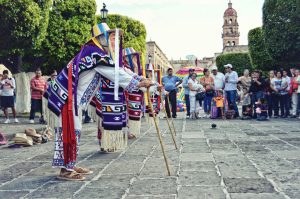Street festivals that showcase local traditions
We live in a fast-paced world where modernization and globalization have led to the loss of many traditional practices and cultural identities. However, amidst all the changes, street festivals that showcase local traditions have managed to hold on to their roots and continue to thrive. These vibrant events are not only a celebration of a community’s customs and rituals, but they also offer visitors a unique and authentic glimpse into their way of life. In this article, we will take a closer look at some of the most exciting street festivals that showcase local traditions and the cultural significance behind them.
The Importance of Street Festivals in Preserving Local Traditions
Street festivals have been an integral part of community life for centuries. They are not only a form of entertainment, but they also serve as a means of preserving and promoting local traditions. With modernization, many traditional practices and customs are at risk of being lost forever. Street festivals provide a platform for communities to showcase their cultural heritage and pass down their traditions to future generations.
Apart from preserving cultural identities, street festivals also contribute to the economic growth of a region. These events attract visitors from far and wide, boosting tourism and creating job opportunities for local vendors, artists, and artisans. They also provide a source of income for local businesses such as restaurants, hotels, and souvenir shops.
The Fascinating World of Street Festivals That Showcase Local Traditions
1. Diwali – The Festival of Lights (India)
Diwali or Deepavali is one of the most well-known and widely celebrated street festivals in India. The festival, usually held between October and November, commemorates the triumph of good over evil. During this five-day celebration, people light diyas (clay lamps) and decorate their homes with colorful rangolis (intricate designs made of colored powder) to ward off evil spirits.
One of the most exciting aspects of Diwali is the spectacular display of fireworks that light up the night sky. Communities come together to witness these magnificent displays and indulge in delicious traditional sweets. The festival also holds religious significance for many Hindus, who offer prayers to Goddess Lakshmi, the deity of wealth and prosperity.
2. Thaipusam – A Test of Devotion (Malaysia)
Thaipusam is a Hindu festival celebrated mainly by the Tamil community in Malaysia. The festival, which falls between January and February, is a testament to the devotion of the believers towards Lord Murugan, the God of War. The highlight of Thaipusam is the kavadi procession, where devotees carry elaborate structures (kavadis) adorned with peacock feathers, fruits, and flowers on their shoulders while chanting hymns and dancing.
Many believers also undergo rites of body piercing where they pierce their bodies with vel (metal spears) as a form of penance. This is done as a sign of gratitude and to seek blessings from Lord Murugan. Thaipusam is not only an expression of faith but also a celebration of the rich cultural heritage of the Tamil community in Malaysia.
3. Carnival – A Festive Extravaganza (Brazil)
The Brazilian Carnival is arguably one of the most extravagant and colorful street festivals in the world. Held in the days leading up to Lent, this festival is a celebration of life, music, and dance. The main highlight of the carnival is the parade of samba schools in Rio de Janeiro, where participants don elaborate costumes and perform mesmerizing dance routines.
The carnival also showcases various traditional dances, such as the frevo, maracatu, and axé, which have African and indigenous roots. It is a celebration of the diverse cultures that make up Brazil and a reminder of the country’s history and heritage.
4. Loy Krathong – Paying Homage to Water (Thailand)
Loy Krathong is a beautiful festival celebrated in Thailand to honor the goddess of water, Phra Mae Kongka. Held in November, it is a time when people give thanks to the river for its abundant resources and seek forgiveness for polluting it. During this festival, people release lotus-shaped rafts (krathongs) made of banana leaves, flowers, candles, and incense into rivers, lakes, and canals as a symbol of letting go of negative thoughts and starting anew.
Aside from the krathong floating, Loy Krathong also features traditional dances, beauty pageants, and delicious food stalls. The festival brings communities together to celebrate and appreciate the importance of water in their lives and show respect towards nature.
Preserving Local Traditions, One Street Festival at a Time
Street festivals that showcase local traditions play a vital role in preserving cultural identities and promoting awareness of our diverse world. These vibrant and colorful events are a testament to the resilience of communities in holding on to their customs and way of life. As we continue to embrace modernization, it is crucial to remember the importance of traditional practices and the role they play in shaping our society. So, if you ever come across a street festival that showcases local traditions, be sure to join in the celebration and experience the rich and unique cultures of different communities around the world.











